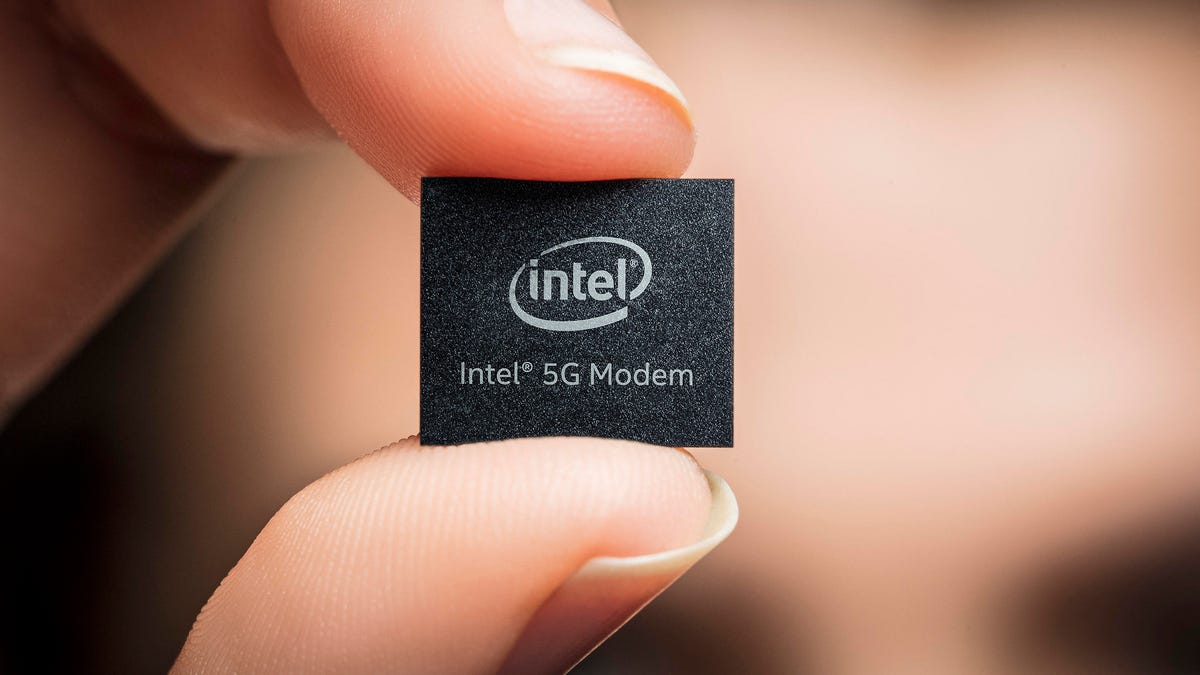Intel fights for a spot in your next phone
Adding faster network features like gigabit LTE and 5G could help Intel power communications in future iPhones and other phones.

Intel's 8060 5G modem chip
Intel's years-long effort to supply the processor brains for our phones was a flop, but the company is working hard to bring its communication chips to our phones.
A series of developments the company announced Thursday could help its mobile prospects and perhaps improve next year's iPhones with a faster version of today's network technology called gigabit LTE.
Even if you don't care much whether Intel reclaims the consumer cachet it had when PCs ruled the tech industry, you might want to pay attention to this issue. Intel's work could fan the flames of competition, helping to cut phone costs and advance technology faster.
Here's what Intel has cooking for its communication chips:
- A new chip, code-named Gold Ridge but now branded XMM 8060, will mean Intel can power 5G phones released in mid-2019. Today's the fourth-generation networks, using
LTE
, reach speeds close to 1 gigabit per second, but 5G should be 10 times faster than that and bring other big improvements when it starts arriving in 2019.
- Its successor, the XMM 7660, will roughly double LTE network speeds of to 1.6Gbps when it arrives in phones in 2019. It'll also support a wider range of frequencies, helping phone makers sell phones in multiple markets and helping us when we're roaming from country to country.
- It's the XMM 7560 that could help
Apple
and Intel in the next year. Gigabit LTE is arriving already in the United States -- T-Mobile offers it in 430 markets and Verizon in 560.
Intel has made its first 5G call with a prototype of the 8060 chip, said Chenwei Yan, general manager of Intel's connected products. The chip will support not just conventional radio airwaves with frequency less than 6GHz but also the tricky new "millimeter-wave" bands at 28GHz that are a hallmark of 5G.
"It's a real 5G call," made over the 28GHz band, Yan said. "It demonstrates 5G is real."
Intel already announced the XMM 7560 chip that'll be available in phones in 2018, but now it's said it's got gigabit LTE working in prototypes today. The 7560 also adds support for network technology called CDMA that, while older, is still important for Verizon customers.
Intel's biggest communication chip rival, Qualcomm, already offers gigabit LTE support, and several Android phones, including the Samsung's Galaxy S8 and Galaxy Note 8, the LG V30 and the HTC U11, support it. But the new Apple iPhone 8 and iPhone X don't support gigabit LTE.
Intel's 7560 4G modem chip is due to arrive in phones going on sale in 2018.
iPhones today use communication chips from Intel and Qualcomm, but Apple and Qualcomm are in a major legal fight that could boost Intel's prospects.
Apple declined to comment for this story. But Pete Lancia, a Qualcomm vice president of marketing, isn't worried about Intel challenging its lead.
Qualcomm has built modem chips that match what carriers are doing today to improve network speeds and decrease networking delays, Lancia said. "That's allowed us to have a strong position in the modem space. As we're transitioning from 4G to 5G, we expect that to continue."
Qualcomm-powered 5G phones will arrive in the first half of 2019, Lancia said. Qualcomm announced its first 5G call a month ago.
Intel expects to sell its 8000-series 5G chips in phones, but also other devices, Yan said. That'll personal computers, home network broadband network equipment and eventually cars, too. And it hopes to supply chips not just for 5G phones but for all the network equipment and data centers that carriers operate.
"5G is a true convergence of computing and communications," said Sandra Rivera, senior vice president of Intel's network-related products. "We've got the full complement of hardware and software capabilities."

